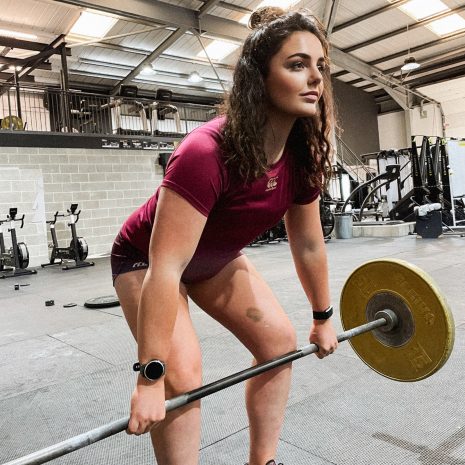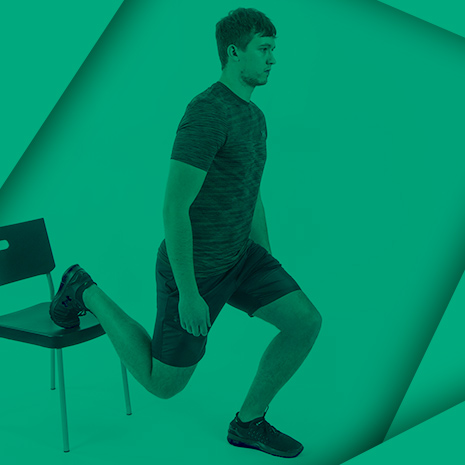The team at rugbystore has teamed up with esteemed Chartered Physiotherapist, Neil Aitken to give you high quality information on the most common Rugby injuries and how to best recover from them. If there’s a particular injury you’d like us to cover with Neil’s help, get in touch with us on social media (Facebook | Twitter).
In this article, we answer some of the most commonly asked questions people have when they suffer a sprained ankle. If you are looking for more detailed information on exactly what a sprained ankle is and how to recover from it, check out our Comprehensive Recovery Guide for Sprained Ankles.
Quick links
- Have I broken my ankle?
- Sprained ankle recovery time
- Does a sprained ankle bruise?
- How to treat a sprained ankle
- How long should I rest my sprained ankle?
- What’s the difference between a sprained, twisted and strained ankles?
- Should I use heat to treat a sprained ankle?
- When can I run after a sprained ankle?
- When can I play rugby after a sprained ankle?
- How to strap an ankle
- When to strap an ankle
Have I Broken My Ankle?

- There is the possibility of a fracture which is highlighted by any of the following:
- Inability to bear weight on the affected leg
- Bone tenderness along the lower portion of the ankle bones on the outside or inside of the ankle
- Bone tenderness at the base of the 5th metatarsal, this is found midway along the outside of the foot
Sprained Ankle Recovery Time
- Usually 3-6 weeks, but a more severe sprain may take 2-3 months or even longer.
Does A Sprained Ankle Bruise?
- Yes. You will have swelling around the ankle and this changes to bruising after a few days. This then typically tracks down to your foot due to gravity so you will see bruising along the outside of the sole of your foot.
How To Treat A Sprained Ankle

- Protection, Rest, Ice, Compression and Elevation (PRICE protocol). Protection is best from an ankle brace rather than a simple tubigrip. Rest prevents further bleeding and irritation of the ligament. Ice can be applied for 20 mins every 2 hours. Compression will also help to limit swelling as will elevation of the leg, although research shows that to be truly effective elevation needs to be at 60 degrees above heart level – so be sure to lie on your back with the leg well elevated.
How Long Should I Rest My Sprained Ankle?
- You should rest it for the first 2-3 days but it is then important to get the ankle moving. This should be guided by pain, but generally it is important to maintain the mobility of your ankle and to strengthen the muscles around the ankle and to rehab your balance system (proprioception).
What’s The Difference Between A Sprained, Twisted and Strained Ankle?
- There’s no difference between a sprained, twisted and strained ankle – these are all terms commonly used to describe what a physio would call an inversion strain of the ankle.
Should I Use Heat To Treat A Sprained Ankle?

- No, this would increase the blood supply to the injury site and would add to the swelling. It is better to use ice as part of the PRICE protocol.
When Can I Run After A Sprained Ankle?
- When it’s pain-free to hop on your ankle, this is when you can start to try jogging again.
When Can I Play Rugby After A Sprained Ankle?
- You should be able to sprint, sidestep and turn sharply on the injured side before going back to rugby training. Simple jogging is not enough as your ankle will be exposed to these sorts of sharp movements in training and during a game.
How To Strap An Ankle

- Use an elastic adhesive bandage to make an anchor around your calf. Then using strips of zinc oxide tape, go from the anchor on the inside of the calf down under the heel and pull the tape firmly as you go up from the outside of your heel to the anchor. You can repeat this 2 more times, one at a slight angle from just in front of the tape you just applied on the anchor on the inside of the calf to just behind on the outside anchor. The other should do the opposite, going from just behind on the inside anchor to just in front of the outside anchor. To get started, check out rugbystore‘s taping and strapping equipment, including zinc oxide tape.
When To Strap An Ankle
- Unless you have severe instability of the ankle, it is best to stop taping your ankle once you have rehabbed the ankle fully. It is important to expose the ankle to the stresses and strains of full training as this strengthens it further. If you always rely on tape for stability, the ankle ligaments and muscles will be weaker than they could be.
About the author
Neil Aitken is a Chartered Physiotherapist with a private clinic in Edinburgh. He has previous experience as a senior physiotherapist in the NHS and provided physio for one of the top amateur rugby teams in Scotland. He is highly evidence-based having completed a Post Grad in Musculoskeletal Physiotherapy gaining membership to the MACP, one of the most highly respected qualifications within physiotherapy.
Website: http://www.neilaitkenphysio.co.uk/
Facebook: https://www.facebook.com/neilaitkenphysio/
Twitter: @aitkenphysio

Please note, this article is intended to serve as a guide for general information only. Injuries should be assessed by a qualified specialist such as a physiotherapist or doctor. When you sustain an injury, there are always complicating factors that may need to be assessed and addressed by a professional.




Comments